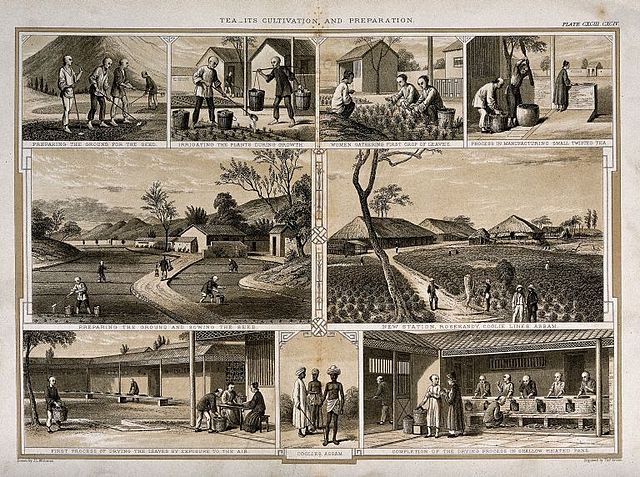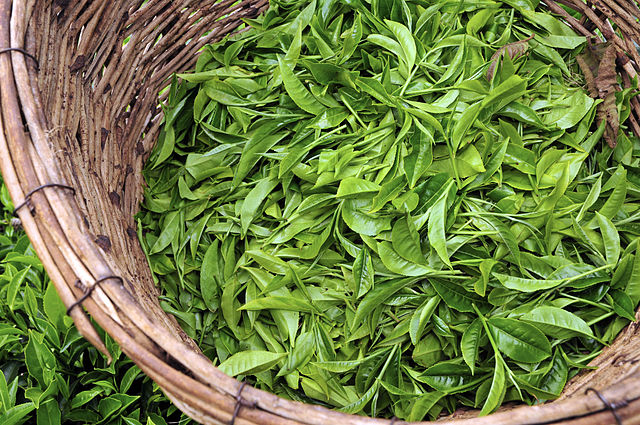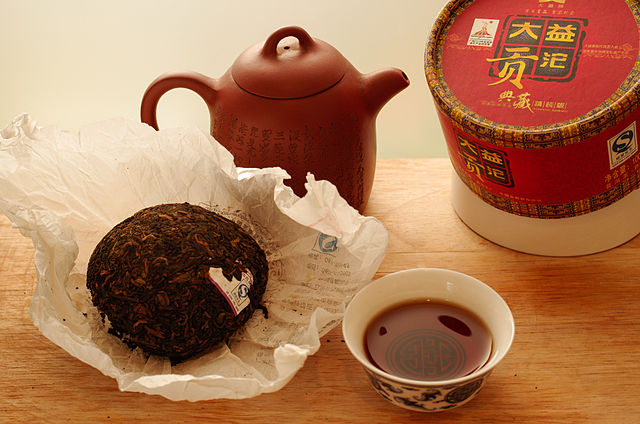Tea processing is the method in which the leaves from the tea plant Camellia sinensis are transformed into the dried leaves for brewing tea.
A Korean bhikkhuni pan roasting tea leaves for fixation
Steaming tea leaves for fixation
An 1850 British engraving showing tea cultivation and tea leaf processing
Freshly picked tea leaves on a tea farm in Kenya.
Pu'er or pu-erh is a variety of fermented tea traditionally produced in Yunnan Province, China. In the context of traditional Chinese tea production terminology, fermentation refers to microbial fermentation, and is typically applied after the tea leaves have been sufficiently dried and rolled. As the tea undergoes controlled microbial fermentation, it also continues to oxidize, which is also controlled, until the desired flavors are reached. This process produces tea known as hēichá (黑茶), literally "black tea", though the term is commonly translated to English as "dark tea" to distinguish it from the English-language black tea.
Pu'er tea
Shú pu'er tea, shúchá, brewed from a brick
Relatively young raw pu'er; note the grey and dark green tones
A pu'er tea factory, which steams, bags, and presses the loose leaf pu'er into tea bricks








